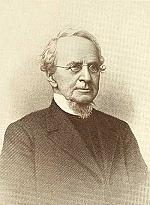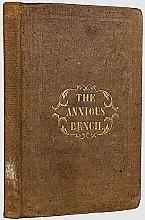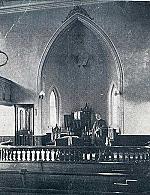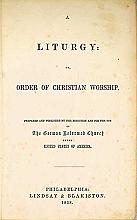Christian History timeline: the Mercersburg movement
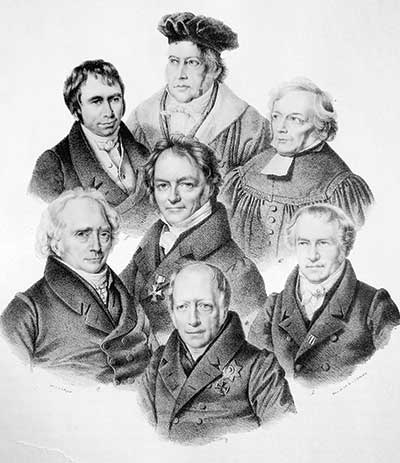
[Julius Schoppe, Das gelehrte Berlin, Early Nineteenth Century. Lithograph—Public domain, Wikimedia]
—1563 The Heidelberg Catechism, a favorite document of the Mercersburg movement, is written.
—1790s–1820s The Second Great Awakening popularizes revivalism in America.
—1803 John Williamson Nevin is born to a Presbyterian family in Pennsylvania. He will study at Union College and Princeton Seminary.
—1819 Philip Schaff is born in Switzerland. He will study at universities in Tübingen, Halle, and Berlin.
—1825 The Seminary of the German Reformed Church in America is founded. Its move to Mercersburg, Pennsylvania, in 1837 will eventually give the movement its name.
—1830–1840 Nevin teaches Bible at Western Theological Seminary in Pittsburgh. He reads August Neander’s General History of the Christian Religion and Church.
—1832–1841 Frederick Augustus Rauch teaches at the seminary, introducing German theology and philosophy.
—1834 Friedrich Schleiermacher publishes his final edition of The Christian Faith. This systematic theology serves as an important inspiration for the Mercersburg theology.
—1837 Georg Wilhelm Friedrich Hegel’s Lectures on the Philosophy of History is published, arguing that history is a spirit-led developmental process.
—1840 Nevin teaches in Mercersburg and joins the German Reformed Church.
—1841 Schaff attends Friedrich Schelling’s Berlin lectures on the “Philosophy of Revelation.” He will draw on both Hegel and Schelling in articulating Mercersburg’s idealist view of history as organic and developmental.
—1844 Nevin publishes The Anxious Bench, arguing against revivalism and for the “system of the catechism,” emphasizing lifelong nurture within the church.
—1844 Schaff comes to Mercersburg. Nevin and Schaff begin to collaborate.
—1844 Nevin preaches his “Catholic Unity” sermon, claiming that the life of Christ is given to believers through the means of grace offered by the church.
—1845 Schaff’s inaugural address, The Principle of Protestantism, is published. Schaff argues that each stage in the history of the church grows organically out of its predecessors and contributes to the church’s final unity in one body.
—1845 Schaff is tried and acquitted of heresy and of Roman Catholic tendencies.
—1846 Nevin publishes The Mystical Presence, the most famous expression of Mercersburg theology. It stresses the Incarnation as the essential starting point of Christianity and the centrality of the Eucharist in Christian worship. Nevin and Charles Hodge engage in heated debate.
—1848 Nevin publishes Anti-Christ, or the Spirit of Sect and Schism, decrying the individualism and sectarianism of American Christianity.
—1849 The Mercersburg Review is founded to promote Mercersburg theology.
—1849 The Eastern Synod of the German Reformed Church requests a new liturgy. Nevin and Schaff serve on the liturgical commission.
—1851–1856 Nevin experiences his “dizziness.” He ponders conversion to Roman Catholicism but remains Protestant.
—1855 Schaff’s America is published. He reflects on the evils of slavery, materialism, and sectarianism in the United States and on the potential for creating unity out of diverse denominations.
—1857 The provisional liturgy of the German Reformed Church is presented for congregational trial. Mercersburg theology influences its style of worship.
—1866 The German Reformed Church issues An Order of Worship for the Reformed Church for optional congregational use. Controversy ensues over its sacramentalism.
—1866–1879 Nevin serves as president of Franklin and Marshall College.
—1870 Schaff joins the faculty of Union Seminary in New York City.
—1876 Schaff publishes The Creeds of Christendom. He is now a major spokesperson for ecumenism.
—1886 On June 6, Nevin dies in Lancaster, Pennsylvania.
—1887 A German Reformed commission offers a compromise liturgy, The Directory of Worship. Through this, Mercersburg-style worship continues to shape future generations.
—1891 Emanuel Gerhart, a student of Nevin and Schaff, publishes the first volume of his Institutes of the Christian Religion, a systematic presentation of Mercersburg theology.
—1893 Schaff speaks at the World’s Parliament of Religions in Chicago. After a stroke, Schaff dies on October 20.
—1894 Gerhart releases the second volume of his Institutes.
—1934 The German Reformed Church merges with the Evangelical Synod of North America to create the Evangelical and Reformed Church, incorporating Mercersburg emphases.
—1957 The United Church of Christ is formed via the merger of the Evangelical and Reformed Church and the Congregational Christian Church. Mercersburg theology influences this denomination and the ecumenical church.
—1983 The Mercersburg Society is founded to promote the study of Mercersburg theology, affirming the gospel of Jesus Christ for the sake of the church and the world in the present. CH
By Anne T. Thayer
[Christian History originally published this article in Christian History Issue #155 in 2025]
Anne T. Thayer, professor emerita of church history at Lancaster Theological SeminaryNext articles
Revival, rightly understood?
John Williamson Nevin and “New Measures” revivalism
John Williamson NevinMercersburg’s “worship war”
Crafting a new liturgy for the German Reformed Church created conflict, but also a lasting legacy
Walter L. TaylorMystic, sweet Communion
Excerpts from the liturgy for Holy Communion from the provisional Mercersburg liturgy of 1857
German Reformed Church in the United States of AmericaSupport us
Christian History Institute (CHI) is a non-profit Pennsylvania corporation founded in 1982. Your donations support the continuation of this ministry
Donate



